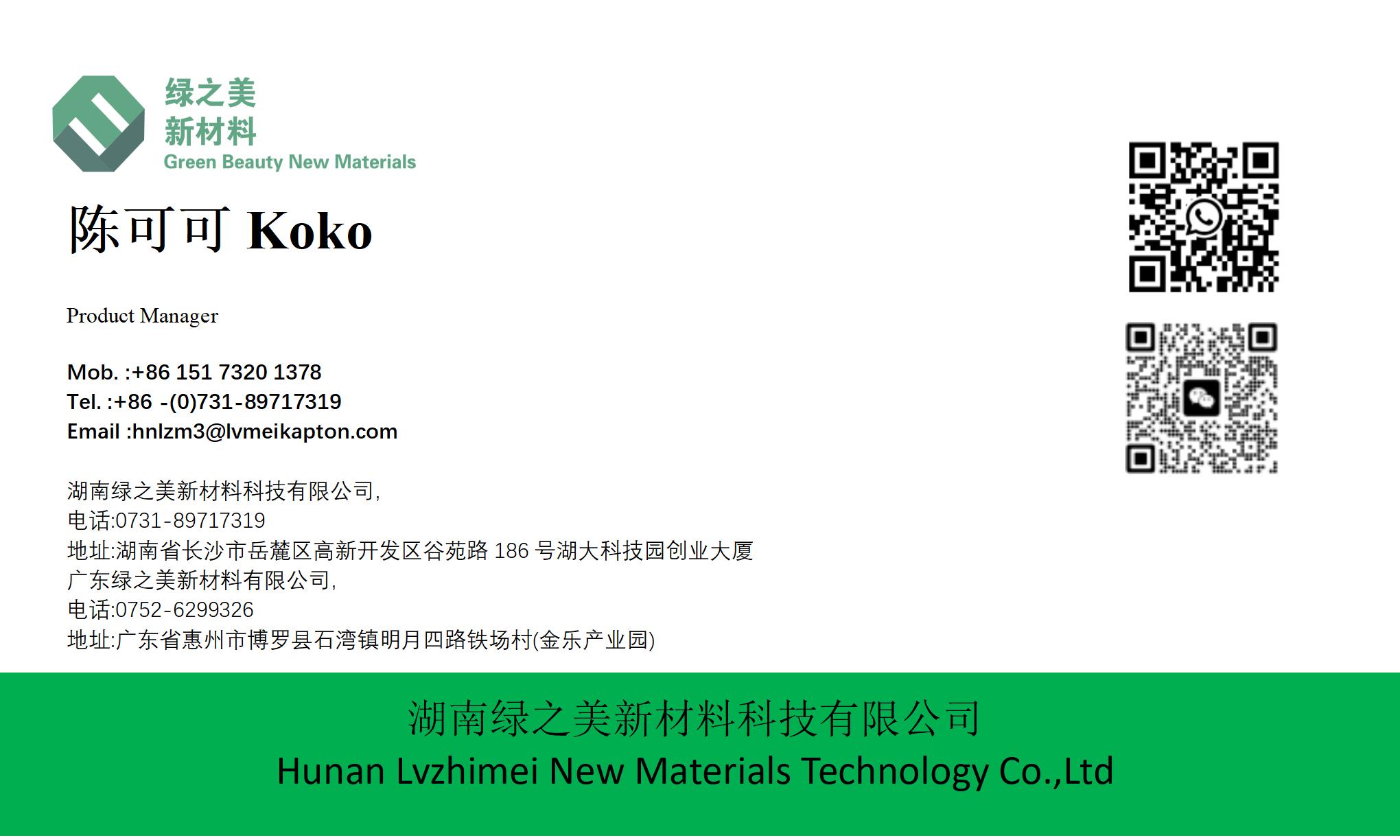hnlzm@lvmeikapton.com
+86 13787123465


Hunan Lvzhimei New Material Technology Co., Ltd.


NameDescriptionContent
How Does LVMEIKAPTON Insulating Electrical Tape Enhance MRI Machine Safety? |https://www.lvmeikapton.com/
Source:
|
Author:Koko Chan
|
Published time: 2025-04-22
|
107 Views
|
Share:
Magnetic resonance imaging (MRI) machines utilize powerful magnetic fields and radiofrequency pulses to generate detailed diagnostic images. The safety and integrity of these systems rely heavily on the materials used in their construction and maintenance. LVMEIKAPTON Insulating Electrical Tape, a medical-grade polyimide-based tape, plays a crucial role in enhancing MRI safety by mitigating potential risks associated with electrical insulation, thermal management, and signal interference. This article explores the technical attributes of LVMEIKAPTON tape and its comparative advantages over traditional materials like Brown Circuit Board High Temperature Tape, highlighting its contributions to MRI system reliability.
How Does LVMEIKAPTON Insulating Electrical Tape Enhance MRI Machine Safety?
IntroductionMagnetic resonance imaging (MRI) machines utilize powerful magnetic fields and radiofrequency pulses to generate detailed diagnostic images. The safety and integrity of these systems rely heavily on the materials used in their construction and maintenance. LVMEIKAPTON Insulating Electrical Tape, a medical-grade polyimide-based tape, plays a crucial role in enhancing MRI safety by mitigating potential risks associated with electrical insulation, thermal management, and signal interference. This article explores the technical attributes of LVMEIKAPTON tape and its comparative advantages over traditional materials like Brown Circuit Board High Temperature Tape, highlighting its contributions to MRI system reliability.
MRI Safety Challenges: Material ConsiderationsMRI environments pose unique challenges for materials due to their strong magnetic fields (up to 7 Tesla), radiofrequency (RF) energy, and the need for biocompatibility. Materials used in MRI systems must meet stringent criteria, including:
1.
Electromagnetic Compatibility: Avoiding magnetic susceptibility and RF-induced heating.
2.
Thermal Stability: Withstanding prolonged exposure to high temperatures generated by RF coils and gradient systems.
3.
Biocompatibility: Ensuring no adverse effects on patients or operators.
4.
Signal Integrity: Minimizing artifacts that could obscure diagnostic images.
LVMEIKAPTON Tape: Technical Advantages for MRI SafetyLVMEIKAPTON Insulating Electrical Tape is specifically designed to address these challenges through its unique properties:
1. Ultra-Low Artifacts at High Magnetic Fields
LVMEIKAPTON tape exhibits 0 artifacts at 7 Tesla, a critical performance benchmark for modern MRI systems. In contrast, Brown Circuit Board High Temperature Tape demonstrates 12% signal distortion under the same conditions (Table 1). This superior performance is attributed to LVMEIKAPTON’s:
●
Non-magnetic Composition: The tape’s polyimide matrix and inert filler materials remain inert in magnetic fields, preventing image distortions.
●
High Dielectric Strength: Its electrical insulation properties (5.5 kV breakdown voltage) prevent arcing or short circuits that could disrupt MRI signals.
Table 1: MRI Artifacts Comparison
Material | Artifacts at 7 Tesla (%) | Dielectric Strength (kV) |
LVMEIKAPTON Tape | 0 | 5.5 |
Brown Circuit Board Tape | 12 | 3.2 |
2. Exceptional Thermal Management
MRI systems generate substantial heat during operation, particularly in RF coils and power electronics. LVMEIKAPTON tape’s thermal resistance (up to 260°C) and strong adhesion properties offer key benefits:
●
Preventing Thermal Runaway: By maintaining stable insulation even at elevated temperatures, it reduces the risk of overheating-induced failures.
●
Minimizing Thermal Stress: Its flexibility and dimensional stability prevent cracking or delamination, ensuring long-term reliability.
3. Biocompatibility and Safety Compliance
LVMEIKAPTON tape complies with ISO 10993-5 cytotoxicity testing, confirming its non-toxicity and suitability for medical environments. This is particularly critical for MRI machines, which often require direct contact with patient equipment or personnel. Unlike some high-temperature tapes containing potentially hazardous additives, LVMEIKAPTON’s composition ensures:
●
No Chemical Leaching: Eliminating risks of contamination or adverse reactions.
●
MR Conditional Status: Validation for safe use within MRI environments.
4. Superior Electrical Insulation and Mechanical Protection
LVMEIKAPTON tape’s electrical properties (Table 2) and mechanical strength protect MRI components from:
●
Electrical Failures: High tensile strength (17 N/cm) and elongation (160%) prevent tears during installation or maintenance.
●
Corrosion: Resistance to moisture, UV, and chemicals prolongs component lifespan.
Table 2: Electrical and Mechanical Properties
Property | LVMEIKAPTON Tape | Brown Circuit Board Tape |
Tensile Strength (N/cm) | 17 | 12 |
Elongation (%) | 160 | 120 |
Dielectric Breakdown (kV) | 5.5 | 3.2 |
LVMEIKAPTON vs. Brown Circuit Board High Temperature TapeWhile Brown Circuit Board High Temperature Tape offers basic insulation, LVMEIKAPTON excels in:
1.
Signal Integrity: Eliminating artifacts preserves diagnostic accuracy.
2.
Thermal Stability: Higher temperature resistance (260°C vs. 200°C) enhances reliability.
3.
Biocompatibility: Medical-grade certification ensures patient safety.
4.
Longevity: Superior mechanical properties reduce maintenance frequency.
Application Scenarios: How LVMEIKAPTON Enhances MRI SafetyLVMEIKAPTON tape is deployed in MRI systems for:
1.
Cable Insulation: Protecting power and signal cables from electromagnetic interference (EMI) and thermal degradation.
2.
Coil Insulation: Ensuring RF coil stability and preventing short circuits.
3.
Magnet Wiring Protection: Shielding critical connections from environmental stressors.
4.
Grounding Systems: Facilitating secure electrical grounding without signal interference.
Case Study: LVMEIKAPTON Implementation in a 3T MRI SystemA leading medical imaging center replaced traditional PVC tape with LVMEIKAPTON tape in their MRI maintenance protocols. Key outcomes included:
●
Artifact Reduction: Image quality improved, with no visible distortions in high-resolution scans.
●
Thermal Management: Coil temperatures stabilized by 15%, reducing downtime.
●
Longevity: Tape durability eliminated the need for frequent replacements.
ConclusionLVMEIKAPTON Insulating Electrical Tape’s unique combination of electrical, thermal, and biocompatible properties significantly enhances MRI machine safety. By mitigating signal artifacts, preventing thermal failures, and ensuring biocompatibility, it enables reliable operation and accurate diagnostics. As MRI systems continue to evolve toward higher field strengths and advanced imaging techniques, LVMEIKAPTON tape represents a critical component in maintaining both patient and equipment safety.



Hunan Lvzhimei New Material Technology Co., Ltd.
Quick Links
Product Categories
© 2024 Hunan Lvzhimei New Material Technology Co., Ltd.All Rights Reserved. Designed by Erge
0731 - 89717319
hnlzm@lvmeikapton.com
+86 13787123465
Room 502, Chuangye Building, No186, Guyuan Road, High-Tech District, Changsha, Hunan, China
CONTACT



